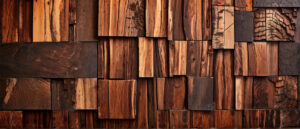
Understanding & Appreciating Natural
Variation in Wood Products
Wood ceilings impart a warm, natural, and visually pleasing aesthetic to a space. Wood’s natural grain, texture, and color variations add richness and depth to interior environments, creating a sense of comfort and familiarity. Wood has a unique ability to establish a connection with nature within man-made interior spaces. Studies have shown that the use of natural wood products in building spaces can enhance personal well-being, productivity, and overall satisfaction with interior environments.

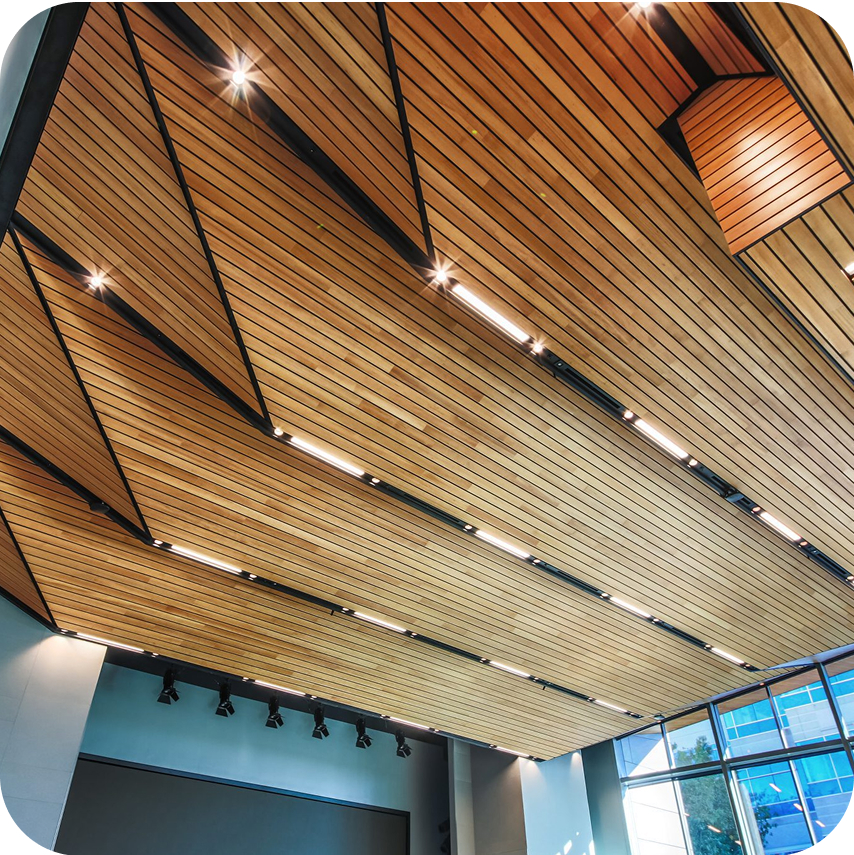
Natural Wood Characteristics
A large part of the appeal of natural wood products is the fact that wood displays several intrinsic natural characteristics such as knots, burls, and mineral streaks, as well as tonal variation and varied grain structure.
When we look at wood the human eye expects to see these natural characteristics. This natural reaction is so ingrained that manufacturers of faux wood products, such as laminates, incorporate these blemishes and natural characteristics into their synthetic design patterns in an attempt to mimic the beauty of real, organic wood.
The natural variation of wood in both veneer and solid wood is a result of four factors: 1. the wood species 2. the wood grade, 3. grain direction or veneer cut direction, and 4. the inherent characteristics of wood itself.
- Factor 1
- Factor 2
- Factor 3
- Factor 4
- Big Factor
Factor 1: Wood Species
The biggest factor that affects natural wood variation is the species. Different tree species have distinct color variations, grain patterns, and other natural characteristics. For example, Maple tends to have a lighter, more uniform color compared to Walnut, which has richer, darker tones, and more pronounced grain patterns. Designers specify the species of wood that will most likely achieve their design aesthetic.
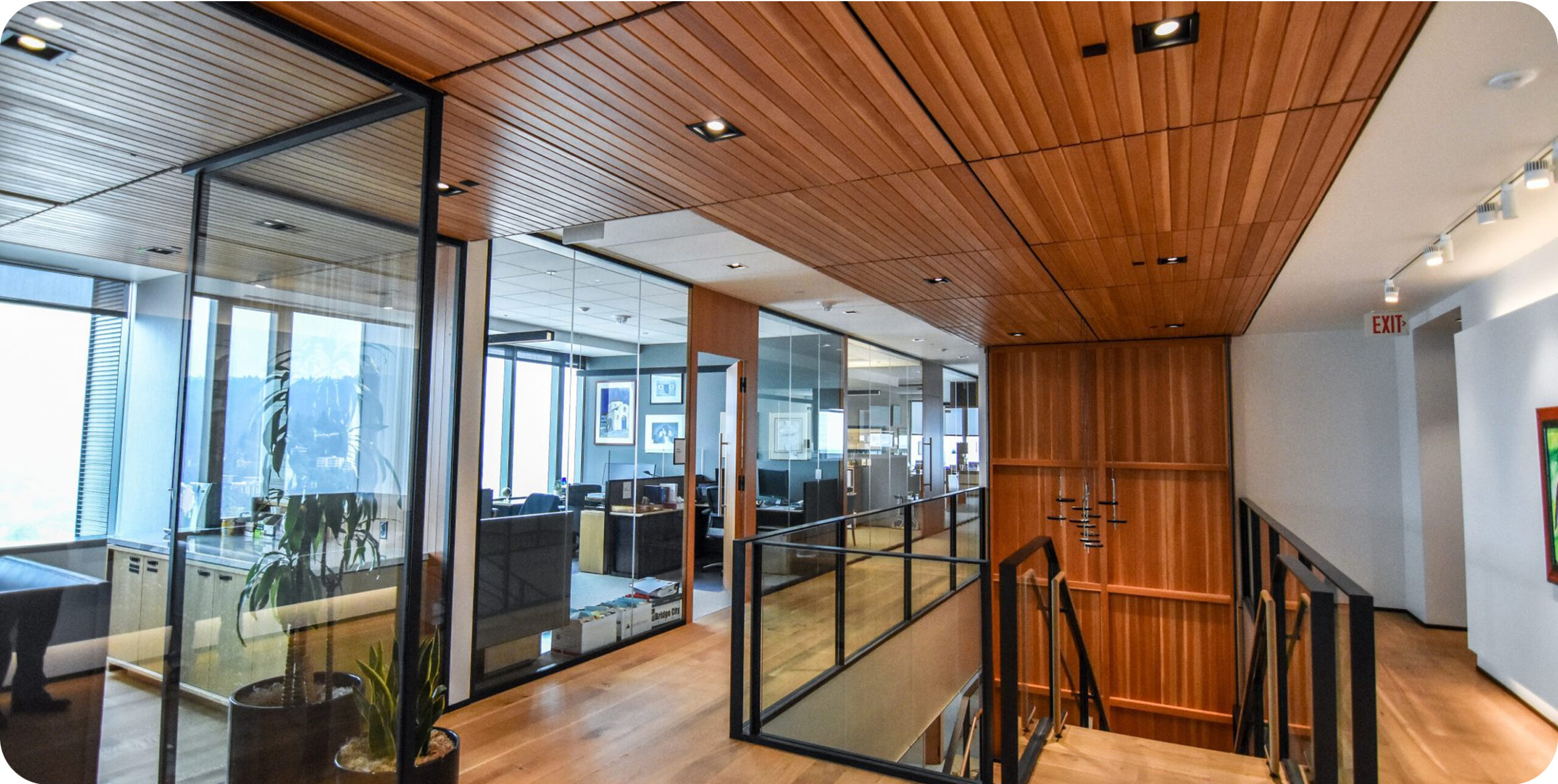
Factor 2: Wood Grade
While it may come as no surprise, a big factor in the natural variation of wood is simply the grade of the material being used. Higher grades of wood offer less variation and more continuity across multiple boards or sheets of the same species. Because of the costs associated with premium-grade options, designers should consider the higher prices of these grade options early in the design process to ensure that both design intent and budget requirements are met.
Let’s take veneer face options, for example. Wood veneer quality is graded on a sliding scale based on its appearance, with A being the highest grade and D the lowest. Above A Grade is another premium AA Grade that is typically only available or used for specifically challenging wood species, such as Cherry. AA Grade is much more expensive, and not all plywood manufacturers or mills carry this premium grade. For some designers, the jump to AA may be worth the cost for specific circumstances.
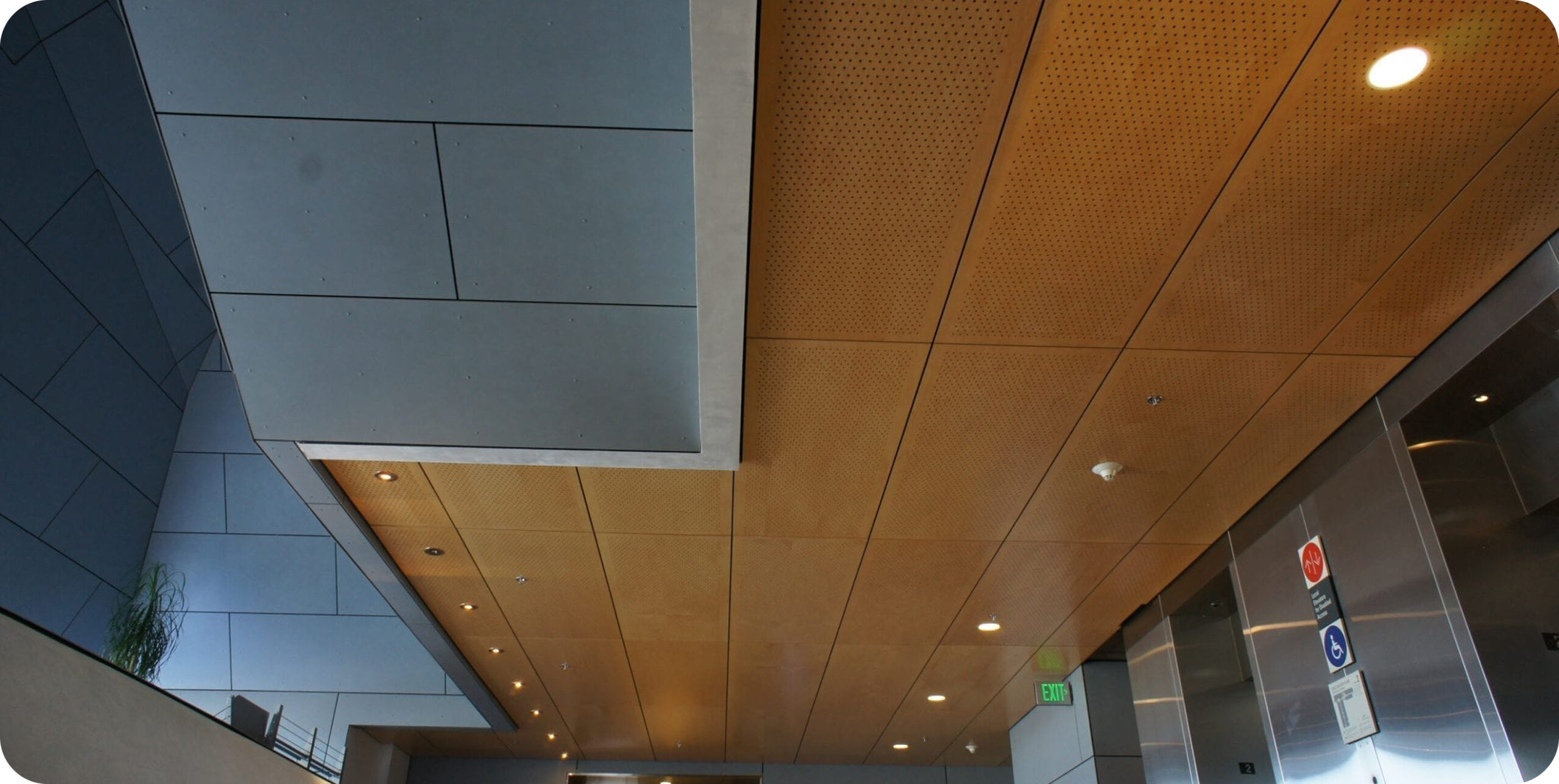
Factor 3: Grain Direction and Veneer Cut Direction
After wood species and grade, the next factor that affects natural wood variation is grain or veneer cut direction.
For veneer wood products, the direction in which the wood is sliced absolutely affects its appearance. Flat-sawn veneers tends to have a more varied grain pattern and wider color variation, while quarter-sawn veneer products display a straighter grain pattern with less color variation. Rotary sliced veneer, although the most efficient, produces the widest panels and is often only available in certain species.
In some cases, designers seeking to achieve the most consistency in terms of appearance and color across panels may specify an engineered veneer, also known as reconstituted veneer. Although still real wood, the veneer face will be free of surface knots or other natural characteristics and display more consistent tonal ranges.
Solid wood generally comes in vertical grain (VG) or mixed grain (MG). Vertical grain is characterized by straight parallel lines and consistent texture, which is achieved by milling the wood perpendicular to the growth rings. Vertical-grain wood is frequently used for trim and perimeter conditions. The milling process for vertical-grain wood results in increased material waste-making VG wood is generally more expensive than other cuts.
In contrast, mixed-grain (MG) wood surfaces showcase a wider variety of rich grain patterns, such as straight, wavy, and sometimes complex grain configurations such as the “cathedral” pattern in plain-sawn wood. Milling mixed-grain lumber maximizes the yield from each log, reducing waste and the cost. Mixed grain is the versatile choice for those who appreciate the organic, less uniform beauty of natural wood.
Factor 4: Inherent Characteristics of Wood
Character makes wood visually interesting. Wood is said to have more “character” when it exhibits distinctive features such as knots, mineral streaks or unique grain patterns. These variations can range from subtle shifts in hue to stark contrasts, creating a dynamic interplay of colors. Woods known for their rich grain and color contrasts, such as Walnut or Cherry, typically have more character compared to more uniform options, such as Maple or Birch.
The trick is knowing a designer’s preference and budget and helping to communicate those expectations as early as possible. For some, more character and variation in the appearance of wood is a desirable trait. In other situations, a more uniform appearance may be preferred.
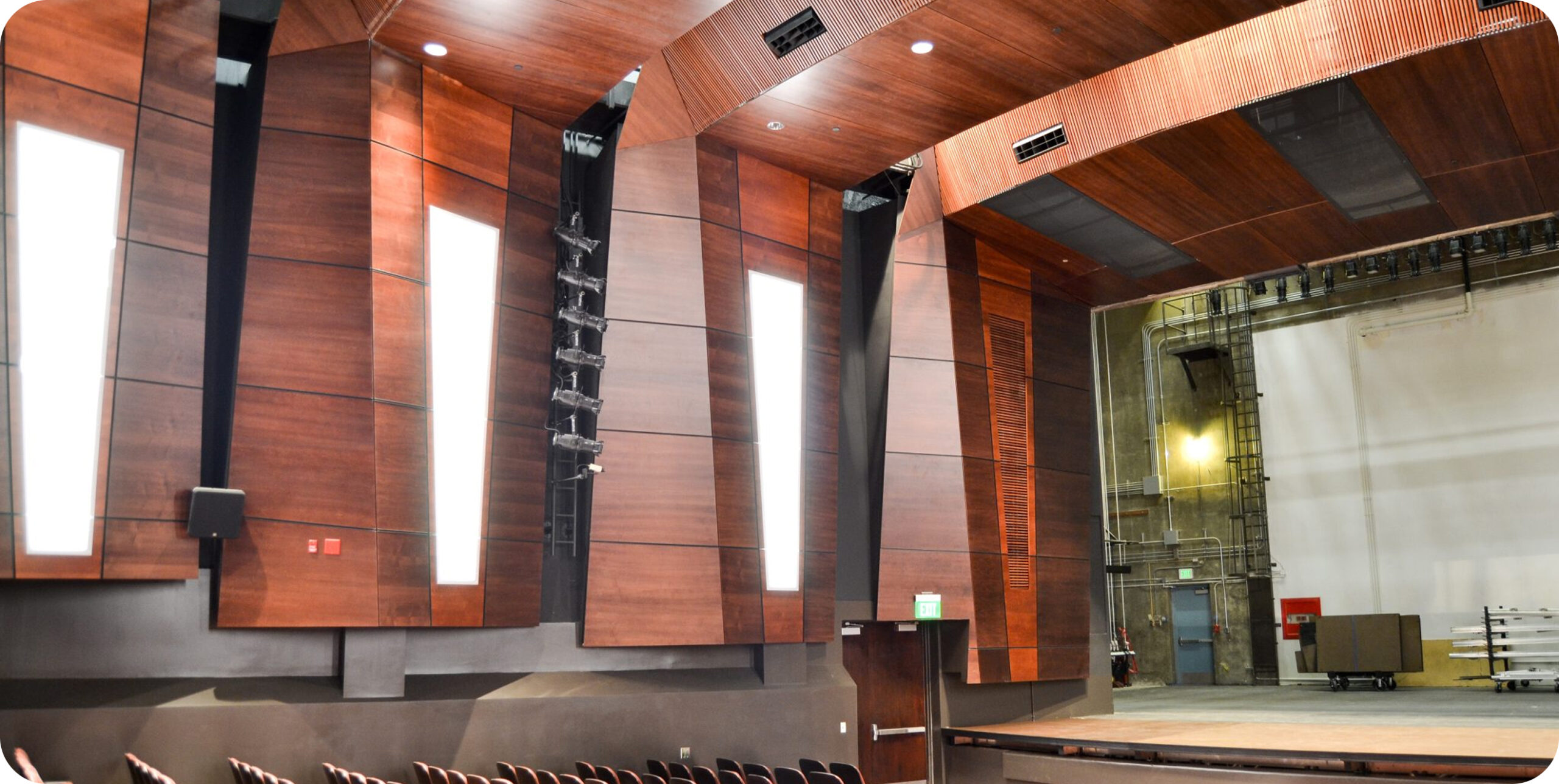
Big Factor: Wood Finishes
The relationship between natural variation and wood finishes deserves its own article. Here is what you should know: The application of stains, oils, or finishes can enhance or alter the natural color and tonal variation of wood products. Some finishes/stains may accentuate the wood’s natural characteristics, while others may mask them to create a more uniform appearance.
Appreciating Natural Variation
in Wood
When utilizing natural wood products in a project it is important to understand that tonal variation, grain structure, and intrinsic characteristics like knots and mineral streaking are to be expected. A 1,000-square foot wood ceiling could include veneers or boards from more than 40 to 50+ different trees—each displaying its own unique visual attributes. While product samples are helpful in visualizing tonal range, grain structure, and stain options, it is not feasible to provide sales and/or submittal samples that will cover the complete range of natural variation found in the many dozens of different trees that make up the average wood-ceiling project. If a very monolithic, uniform appearance is a key component of a project’s design intent, 9Wood offers options that can help achieve this look. For example, specifying engineered veneers, ordering sufficient overage, or hand-sorting veneer sheets are all viable—though more expensive—options.
The factors mentioned above all contribute to the beauty and uniqueness of wood-ceiling products, making each piece distinct and visually appealing. Over our 20+ years in the wood ceiling business, we’ve found that the vast majority of our clients celebrate and appreciate the natural variation that is found in wood products as they add character, warmth, and personality to project spaces.
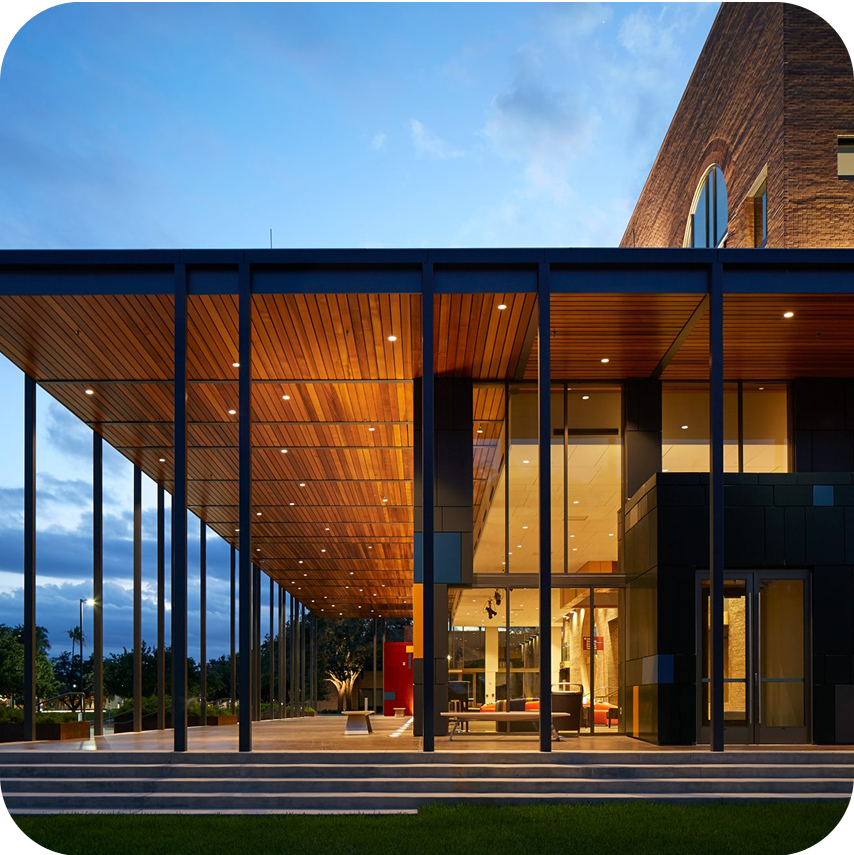

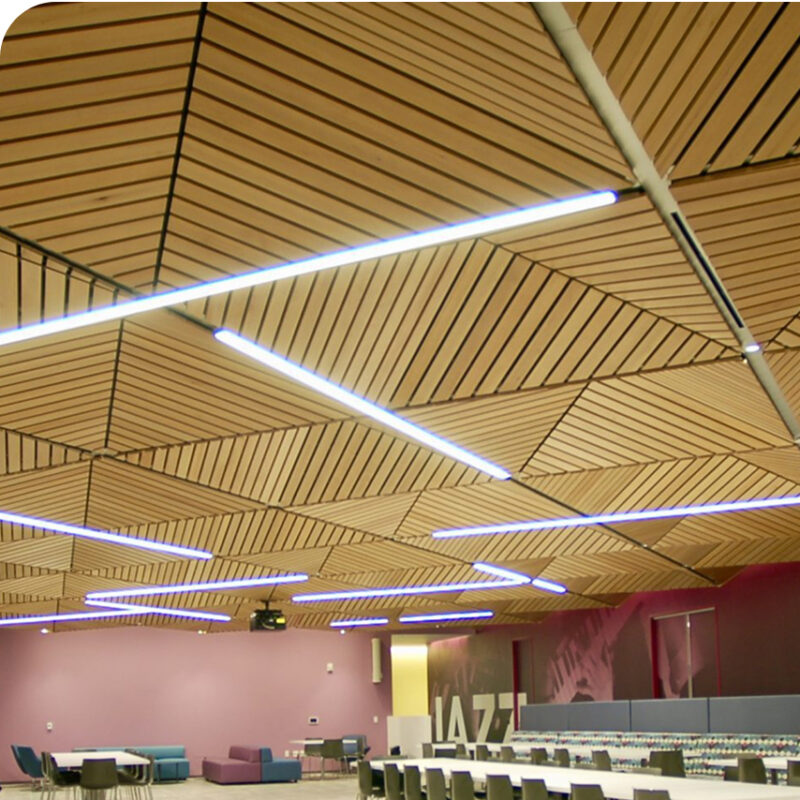
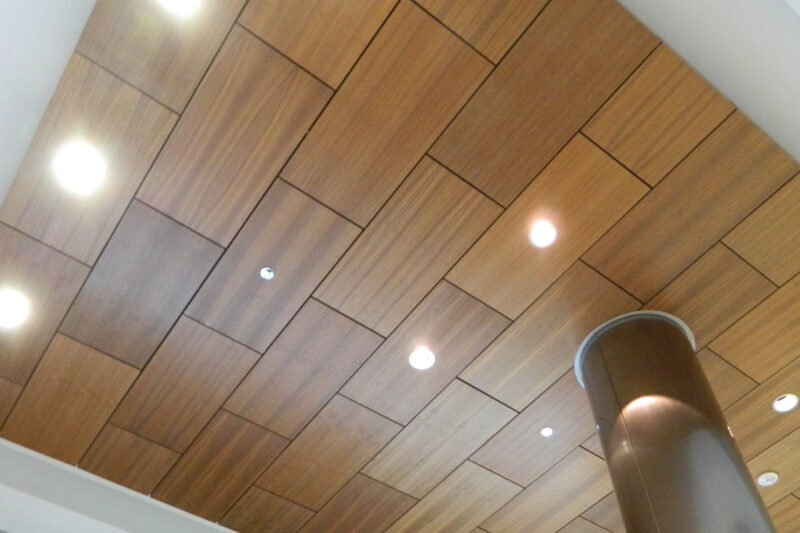
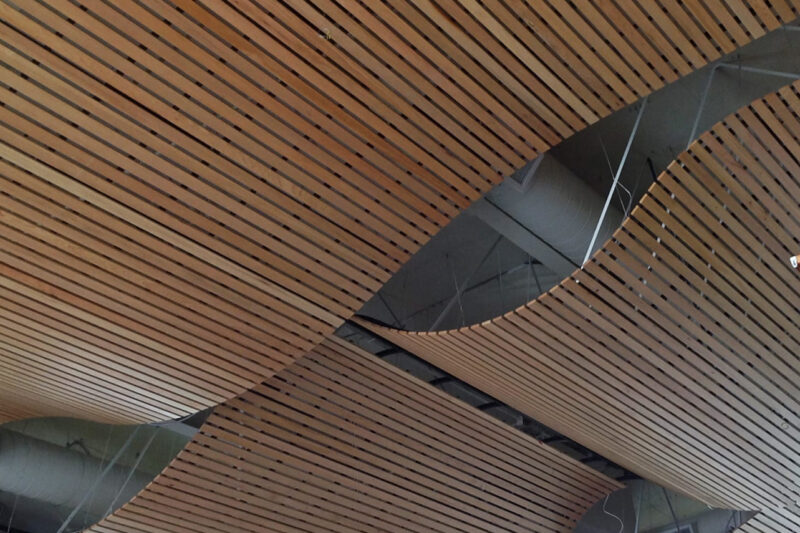
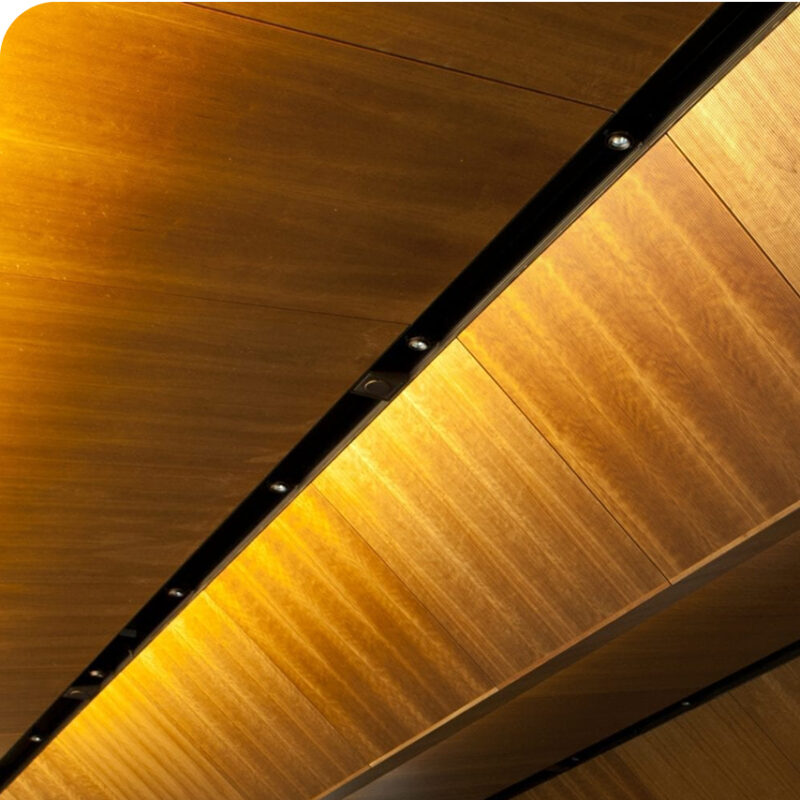
 Don’t forget the crackers! We use cookies to offer you a better site experience and to analyze site traffic. Read about how we use cookies in our
Don’t forget the crackers! We use cookies to offer you a better site experience and to analyze site traffic. Read about how we use cookies in our